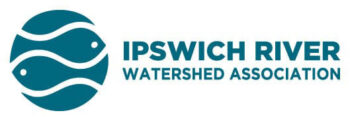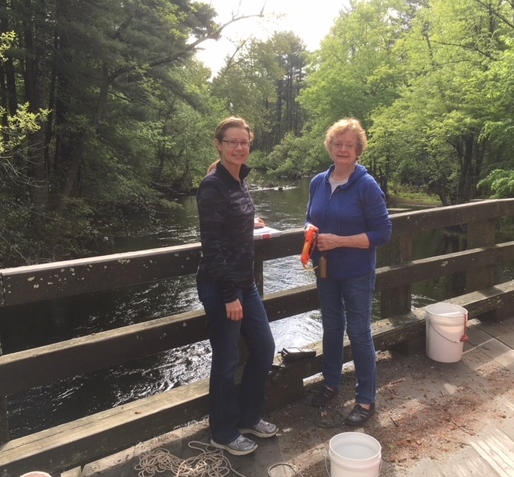Above Monitors Gayle Gleichauf and Mary Smith are two of over 40 volunteer monitors that measure water quality at 35 sites across the watershed on a monthly basis. The Massachusetts Department of Environmental Protection will be conducting a detailed analysis of chlorides from road salts over the coming year based on the data collected by volunteers.
Chlorides are gaining more attention as an emerging threat to water quality in regions where road salts are used for deicing roads. Road salt washes away but then goes directly into rivers and streams through storm drains. Salt, sodium chloride, spits into the two components when dissolved. Chloride is a threat to aquatic life at high concentrations and elevated sodium in drinking water can be harmful to human health.
For the past few years, volunteer monitors have been measuring chloride levels as part of our RiverWatch water quality monitoring program. The results indicate a definite trend in chlorides. Sites closest to highways and more developed areas show higher levels compared to sites surrounded by more protected land. The Massachusetts Department of Environmental Protection has seen the results and will be conducting a study of chlorides in the Ipswich River watershed. They will install continuous loggers at selected sites to collect more detailed data on conductivity that can be directly converted to chloride concentration. This study will be ongoing over the next year and is part of a larger initiative by MassDEP to analyze chloride levels around the state. This analysis will serve as the foundation for new standards and practices to manage chloride levels.
This is a great example of how community scientists have a critical role in collecting vital water quality data that would not be available otherwise.

